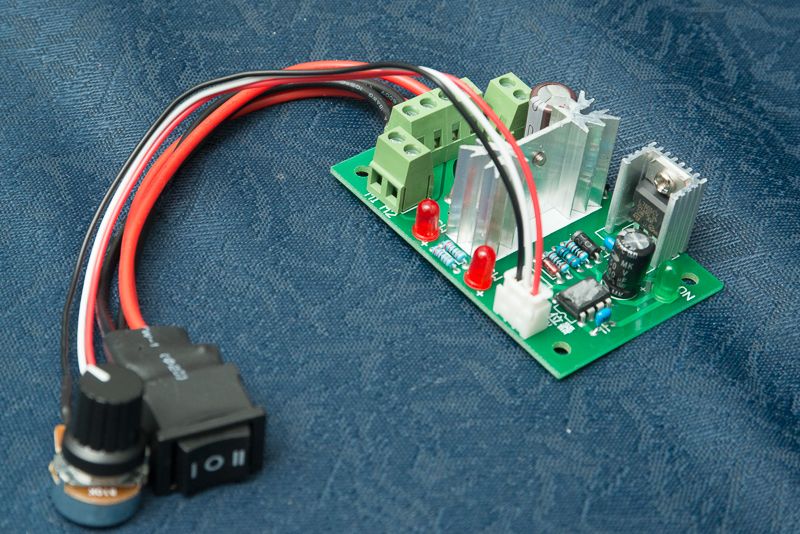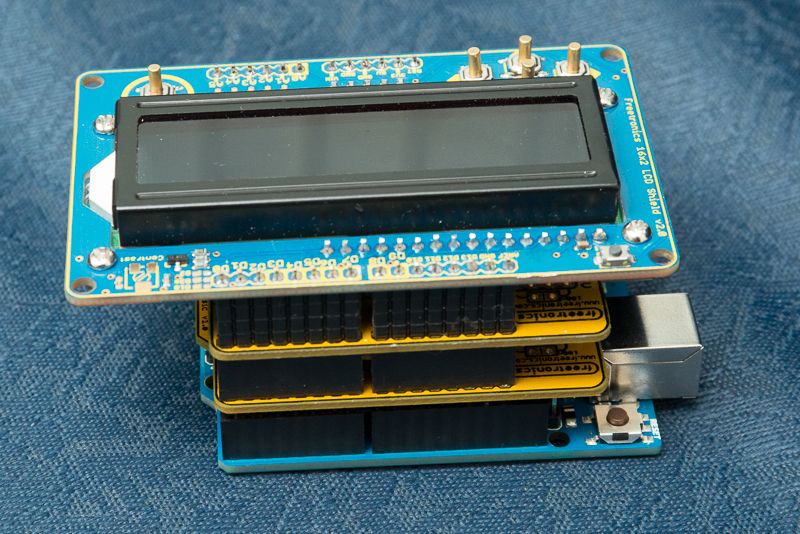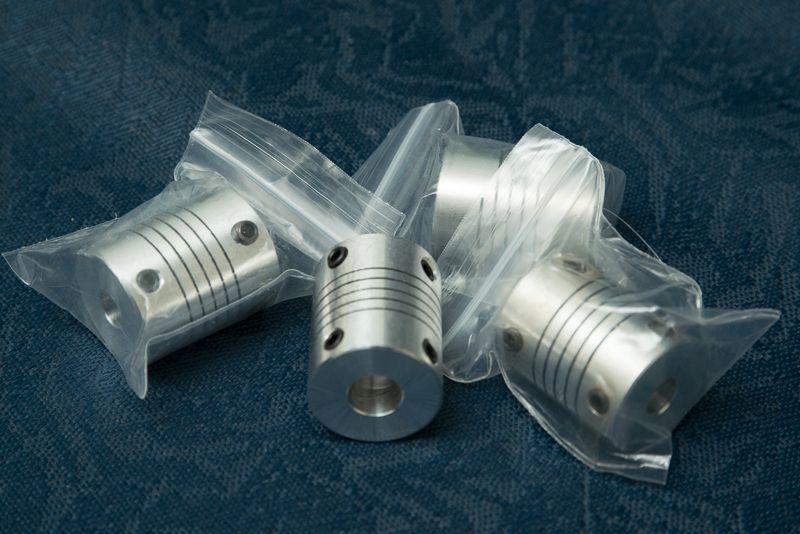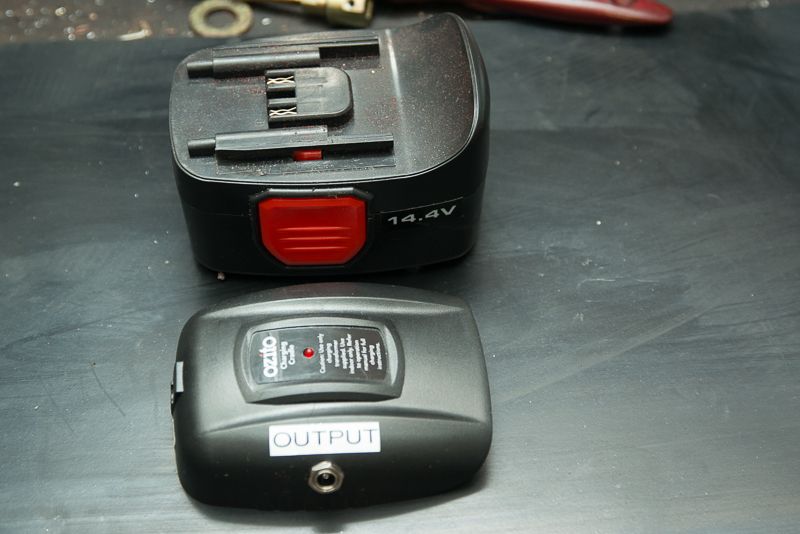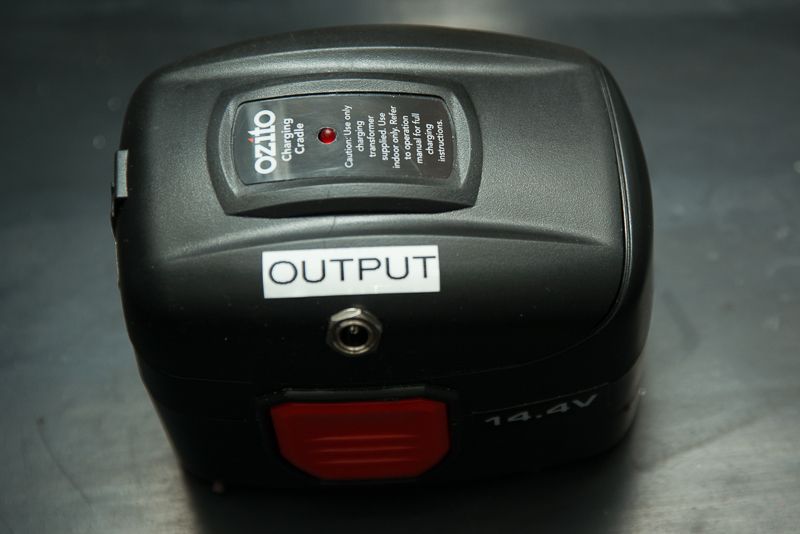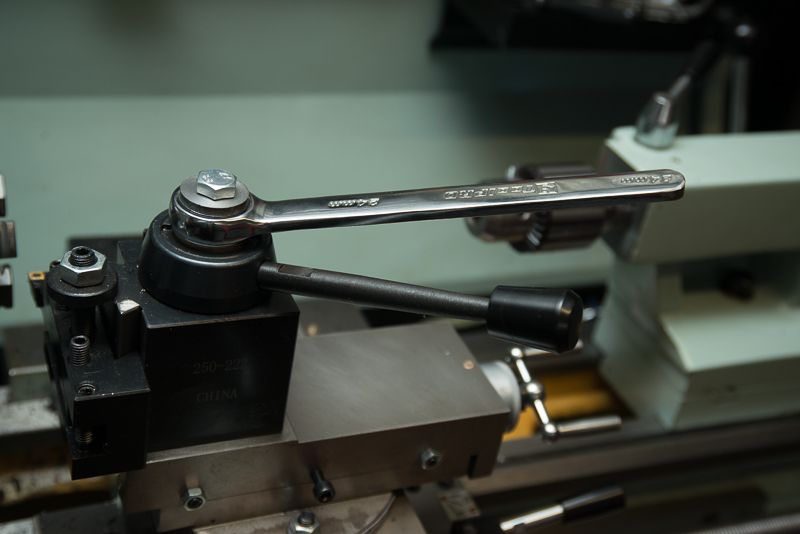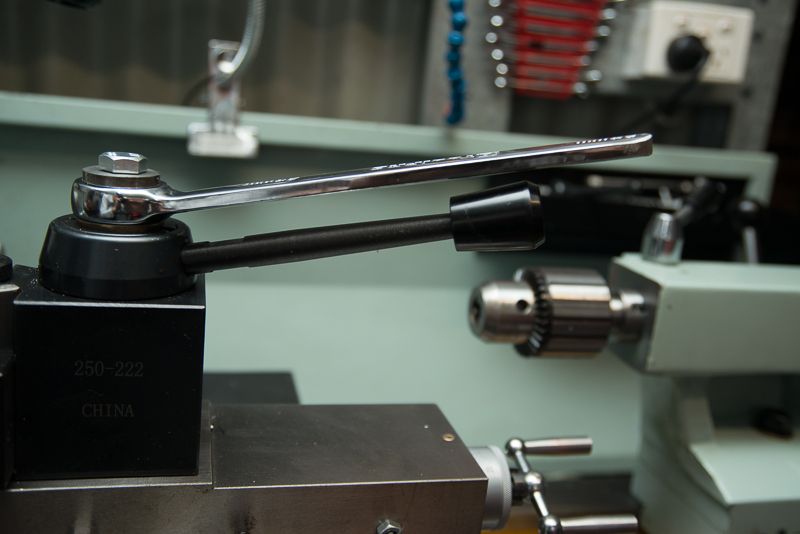Excellent,
looking forward too seeing the new stand,
Well, I have not got much to show for a full days work.
First off, my bandsaw was cutting poorly and by the time I got it cutting straight, I could have had my stand half cut out.
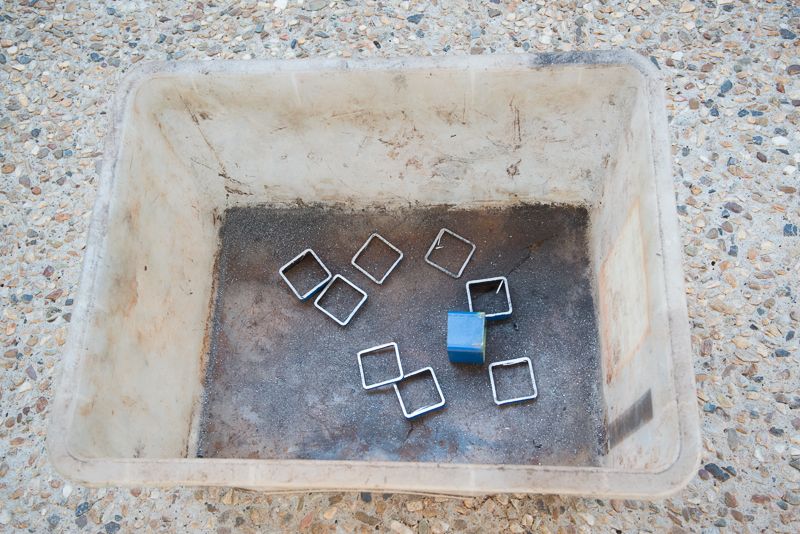
Anyway, I learnt a bit more about aligning this awesome tool. The main culprit on crooked cuts is the alignment of the blade at the driven (motor) end. If the blade is on an angle the cut will be crooked as the blade will wander away from the perpendicular. It is good to start by removing the blade and replacing it with a 30 mm ruler held in place by tightening up the guide wheel eccentrics but this time I needed to tweak it afterwards and check how it was cutting until I thought it was sweet!
And then I consulted my highly detailed CAD drawings
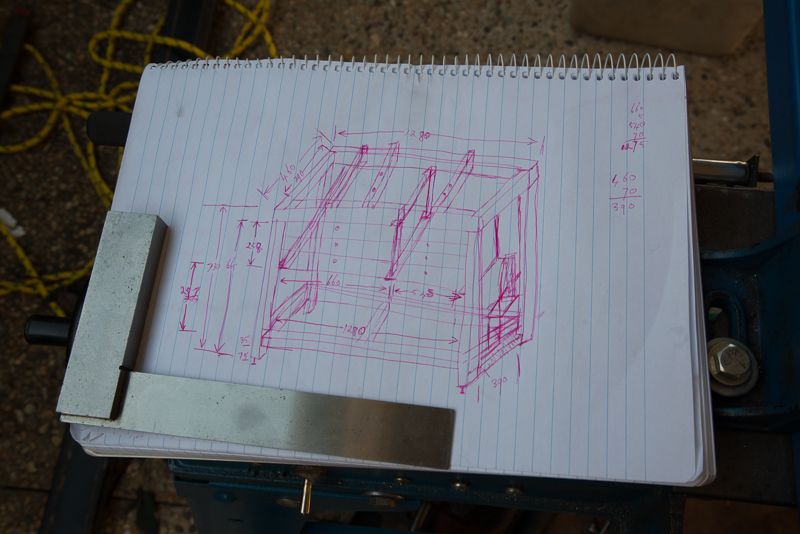
Some of you might wonder how I can cut down an 8 metre length of steel in my 3.8 metre long shed. Well, the answer is, I can't! I roll the bandsaw down to the other end of the house and set up in the carport.
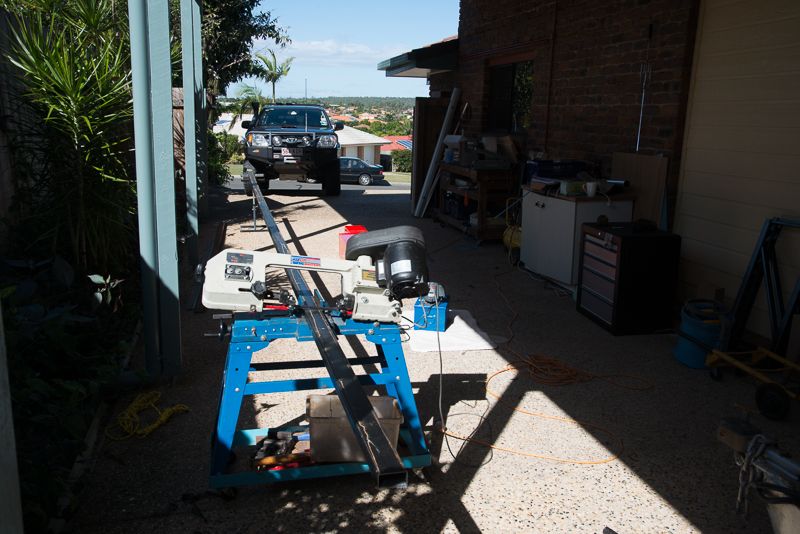
Yup, that's why I like to keep my tools on wheels if I can!
This time I had to open the gate for the first cut which was a pain. Whilst members in the northern hemisphere are thawing out after winter, we are heading into ours and the wind was coming straight through the open gate
AND the band saw was not cutting straight so I was punished for an hour or so!
I also decided to check out the positioning of all of the accessories
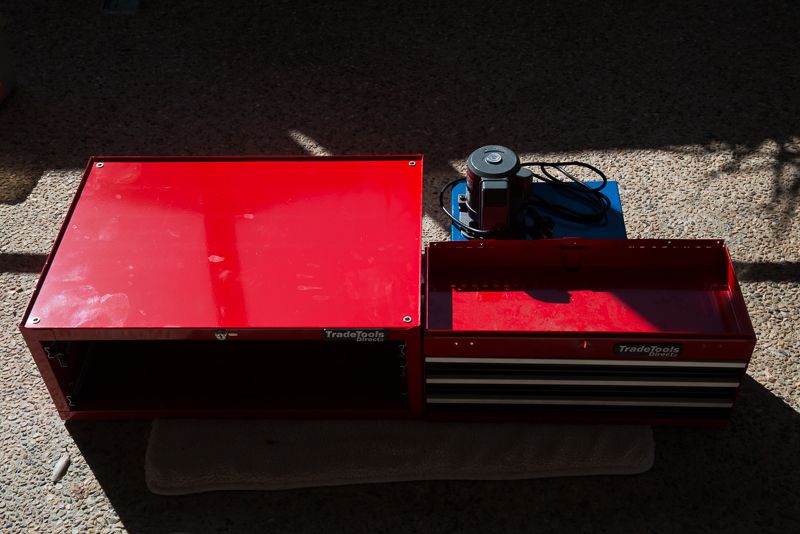
The coolant system will actually sit lower than the cabinets but the motor sticks up in the road so I decided to modify a toolbox to use as drawers so I still had a bit more storage AND room for the coolant system. Also, using a second drawer unit would have seen the stand as being about 1450mm long nd I just don't have room for that! So this configuration matches the length of my Hafco AL320G lathe very closely.

So after a day of cutting stuff down, I ended up with this by about 3:00pm:

The black stuff is 65mm x 35 mm RHS and the blue stuff is 35m x 35mm SHS.
Would you believe I paid good money for the rusty Crap which is 75x50x6mm angle iron
So from the top down we have:
short Black - top cross members (some will be supporting the lathe itself).
short Blue - Bottom Cross members
medium length blue - legs
Long Blue - Bottom front and back rails
Long Black - Top front and back rails
Rusty Crap - Angle Iron for removable wheels
4 x 32mm x 3mm flats - to be used as end caps for top rails to make it look tidy.
Castors - Well I have three sets of these complete with fasteners shown in the small plastic bag. They came with my grey Tactic drawers in the shed. They are pretty crappy but the wheels will be for occasional use and while they are not what you would buy for this application, they were free with heaps of spares, so I decided that they have to be good for 80-100 kg each which is all I need. (I gotta move the 165 kg Seig SX3 out of the doorway before I can wheel the lathe out anyway!
I decided not to use angle iron to support the drawers as it meant the stand had to grow in length so I am going to use 5mm x 50mm flat steel as "Hangers" and let the drawers sit on an inverted T suspended from above. The purpose of the small black blocks is to mount these hangers to.
So with that explanation, the 50mm x 5 mm flats sitting on top are hangers and the tops of the inverted T's. The short black RHS sections are mounting brackets for the hangers. The short piece of 50x5mm steel is the same length as the depth of the toolbox so it will hang down from above on the outboard edge.
So that leaves us with 4 small, sort of square pieces (32mm x 35mm x 8mm) which you can see below the three black RHS brackets.
Well these are to be attached to the bottom of the legs to hold the adjustable feet so I took them back into the shed. 8mm steel, might be a bit thin for a M12 thread but I remember reading somewhere you only need three threads to hold stuff and it equates to 4.6 threads. I had some 10mm steel I could have used but the 8mm x 32mm flat is a good match for the 35x35 SHS and even includes a welding fillet!
Anyway, I took the legs and these bottom pieces back to the shed and after a while, I came had the feet all sorted and tacked into position.
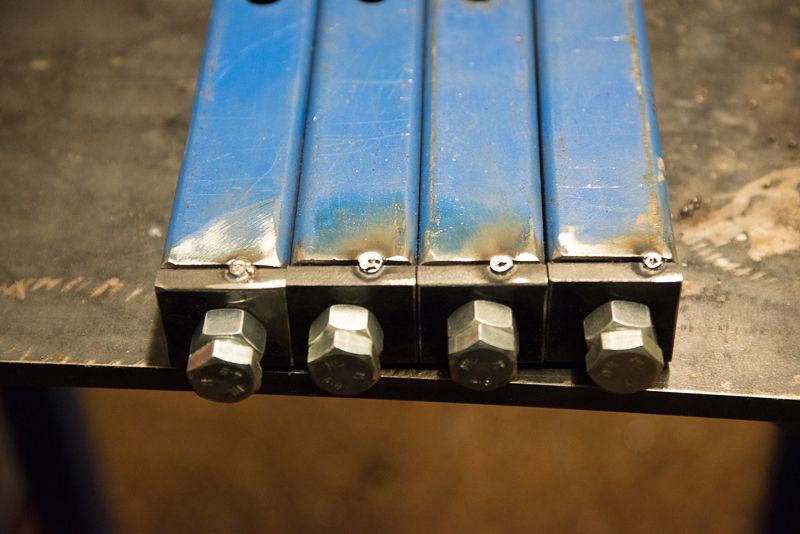
and some holes drilled in the legs to mount the removable wheels
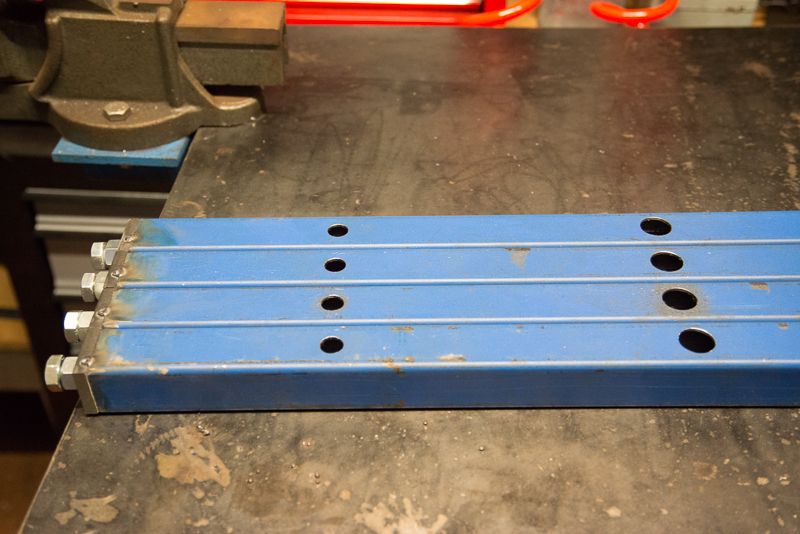
I was expecting to run out of welding gas during this project but I really expected to be able to do more than three spot welds! I really did not hav ethe tie to go and top up with gas during the week so tomorrow I will focus on mounting the castors to the rusty angle iron and turn up a few pins for the removable castors.
I will say that when I first reviewed the example shown earlier in this thread I wanted to mount the wheels so they did not overhang the lathe stand. However, once you get into it, you need to make sure that teh caster hace clerance from the frame an din my case, this worked out to be 130mm. I also considered other mounting systems but then realised that I had to make decisions abut how this was going to work and after half an hour of puxzzling, decided the easiest design was to follow what was shown so I drilled two holes through each leg, The top hole is 19mm diameter and the bottom hole is 13mm to suit a 12mm bolt or pin.
I will turn up a set of 19mm dia pins which have a 10 or 12 mm hole through them to attach the wheels assemblies. I also had a 22 mm drill but decided that was a bit too big a hole to drill through 35mm SHS and keep the strength I want.
So far, all good! I was very fussy (unlike me) with getting dimensions right and It will be few days before I weld it up but I still h ave a fair bit to keepeme busy tomorrow turning up pins and mounting up the castors. If I get time, I would like to duck down to the new Jaycar electronics store at Browns Plains to get a few bits for other projects I have on the go!







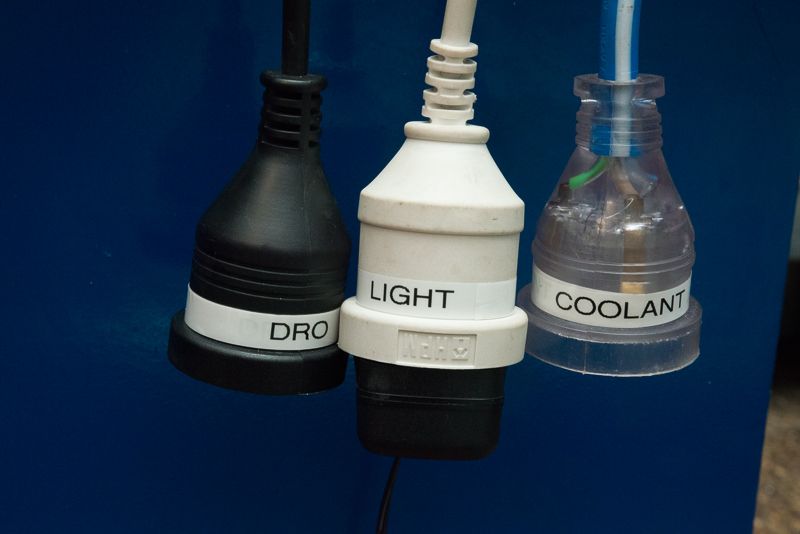




























![MeshMagic 3D Free 3D Modeling Software [Download]](https://m.media-amazon.com/images/I/B1U+p8ewjGS._SL500_.png)

























![DreamPlan Home Design and Landscaping Software Free for Windows [PC Download]](https://m.media-amazon.com/images/I/51kvZH2dVLL._SL500_.jpg)






